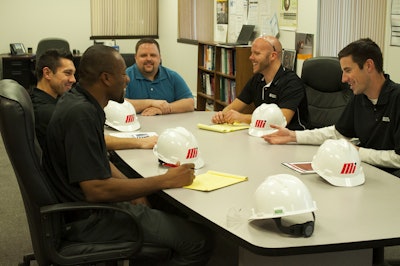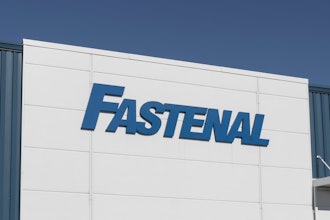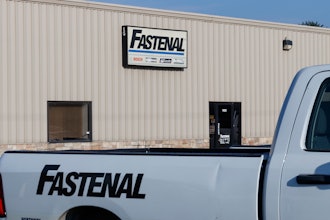
Working as an energy service professional, I often come in contact with honest, well-meaning salespeople who knock on my door almost daily with the newest service, app or doodad which promises to solve all the world’s ills. During these meetings I try and put myself in the position of my customers. Customers who are bombarded with products which claim to require less maintenance, while offering longer product life and increased efficiency all while being less expensive! My guess is, if you sell things for a living you probably believe your products or services have a unique market position. It is also likely that you believe you do not represent inexpensive poor quality stuff. I am fairly certain I have not heard the statement “My widget is poorly constructed but on the upside it is also cheap,” from a sales professional. What surprises me is how many sales professionals do not put themselves in the customer’s shoes.
Let’s say you are a motor manufacturer. A sales call is made to a food and packaging corporation with over 80 locations. As a premier manufacturer of industrial motors, you believe your motor to last longer than their current brand which is known to have problems in a wash-down environment. Your motor is a highly engineered solution specifically designed to survive in this high-pressure wash-down environment. You present your product’s superior features and benefits, promote its longer product life and reduced downtime. Despite all these upgrades and your Tony Robbins-esque charisma, the customer is unswayed. From your perspective, you leave the customer feeling as if they do not get it or do not care. If you are like me, you have tortured yourself rewinding the presentation over and over to figure out what you could have done differently.
Now look at the situation from the customer’s perspective. Your customers are called, emailed and met with regarding dozens of products and services every week. How can they possibly figure out which will actually solve a real problem and which will simply transfer it to another brand? The short answer is they can’t. No one has time to truly vet your solution. Even if they could, perspective, environment, user aptitude, maintenance and a host of other factors complicate the evaluation process. More importantly, whether the primary decision maker is in purchasing, engineering or maintenance it is very unlikely that their job performance or compensation is tied to the profitability of the business. The reality is changing equals risk. If your motor goes in and does not over perform the incumbent product, there is likely a consequence. The decision maker will be likely asked (curtly) why the risk was taken in the first place?
Which brings me to the point, unless it directly threatens their employment or truly makes their life easier, why change at all? If there is truly an issue, let the top levels of management dictate the change thereby transferring accountability to them? This can be an issue for sales professionals as top levels of management are unlikely to see you and hear about your products.
 Trying to put yourself in the position of your customer can help salespeople best prepare for meetings.
Trying to put yourself in the position of your customer can help salespeople best prepare for meetings. Where do we go from here?
Gather all the data: Ask a lot of questions. Get all the stakeholders perspectives. Understanding the problem and the ripple effect this problem creates can lead you to an alternate solution or sales strategy. You may discover the downtime related to this issue is the most costly component when you listen to your maintenance contacts, but the plant manager was only focused on energy efficiency.
Invest in yourself: Give the customer a sample at no cost. In plant testing which shows your product versus the incumbent, in the same environment, receiving the same maintenance support is extremely convincing. If you truly believe your product is superior, create a scenario the customer cannot ignore. Giving them your product at no cost to try is a difficult offer to ignore. If the customer cannot afford the installation, pick it up. The customer cannot afford the downtime, agree to stock one in your inventory until a downtime condition exists.
Proof makes positive: Invest in instrumentation and equipment that validates your claims. If you have a more energy-efficient motor, purchase an amp meter and prove it using the customer’s site as the testing ground.
Be honest: Excluding a handful of companies who make one single, one dimensional product, I have never found a company that is superior in every area. Your product may be the best in the industry in wash-down environments but what about high heat, extreme cold, intermittent duty, etc.? You cannot be everything to everybody and you should not want to be. Being candid about your company’s strengths and weaknesses is likely to ensure you have a place at your customer's table rather than jeopardizing it.
Commitment is a two-way street: Asking your company to give sample products to a customer, invest in tools which validate your value proposition and to allow you to commit your time and energy to securing business should not be done without the customer committing in kind.
 Mike Nagy, Motion Industries' Director of Cost Savings Management
Mike Nagy, Motion Industries' Director of Cost Savings ManagementHelp your customer make decisions by being a partner. Prove your value, show your commitment and make them an offer they cannot refuse. I believe that the more e-tailers impact the industrial market place, the more important supporting our customers with technical service-based selling will become.
Mike Nagy is Motion Industries’ Director of Cost Savings Management, and has led the Motion Industries Energy Services Team for eight years. Before joining Motion, he worked for eight years as an energy conservation manager in manufacturing, specializing in industrial compressed air efficiency. Over the years, he has worked with customers of various industries reach their cost savings goals by identifying opportunities and providing solutions for energy efficiency. For more information, visit www.MotionIndustries.com, and for more helpful product and industry solutions visit Mi's Knowledge Links.























